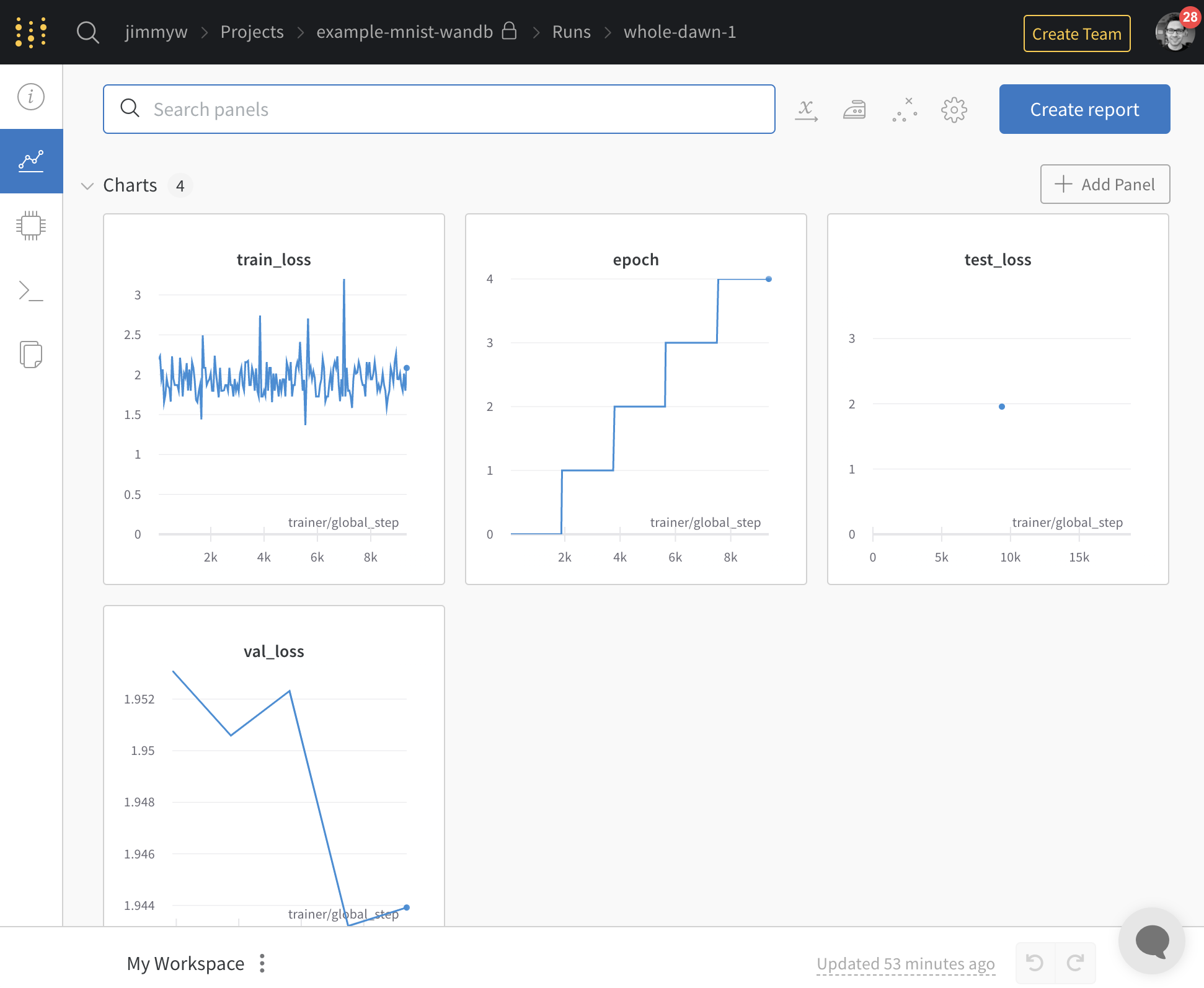Weights and Biases
Learn how to use the Weights and Biases integration to track your data science experiments.
Connect Pachyderm to Weights and Biases to track your data science experiments. Using Pachyderm as our execution platform, we can version our executions, code, data, and models while still tracking everything in W&B.

Here we’ll use Pachyderm to manage our data and train our model.

Before You Start #
- You must have a W&B account
- You must have a Pachyderm cluster
- Download the example code and unzip it. (or download this repo.
gh repo clone pachyderm/docs-contentand navigate todocs-content/docs/latest/integrate/weights-and-biases)
How to Use the Weights and Biases Connector #
- Create a Pachyderm cluster.
- Create a W&B Account
- Copy your W&B API Key into the
secrets.jsonfile. We’ll use this file to make a Pachyderm secret. This keeps our access keys from being built into our container or put in plaintext somewhere. - Create the secret with
pachctl create secret -f secrets.json - Run
make allto create a data repository and the pipeline.
Downloading the data locally and then pushing it to a remote cluster seems like an extra step, especially when dealing with a standard dataset like MNIST. However, if we think about a real-world use case where multiple teams may be manipulating the data (removing examples, adding classes, etc.) then having a history for each of these models can be very useful. In most production settings with supervised learning, the labeling environment can be directly connected to the data repository, automating this step.
About the MNIST example #
- Creates a project in W&B with the name of the Pachyderm pipeline.
- Trains an MNIST classifier in a Pachyderm Job.
- Logs training info from training to W&B.
- If the Data or Pachyderm Pipeline changes, it kicks off a new training process.
